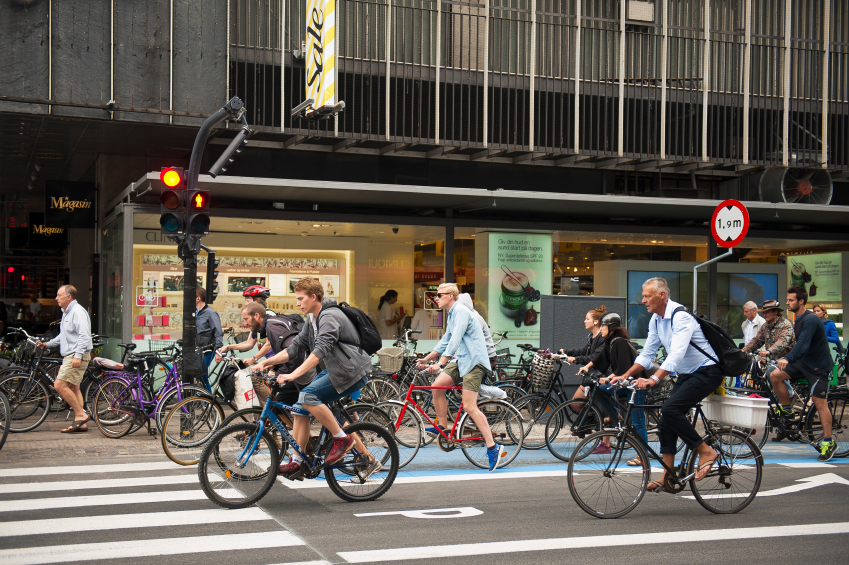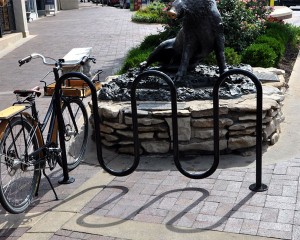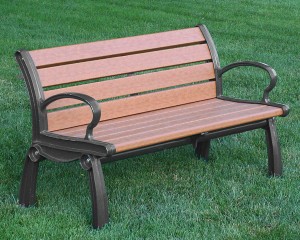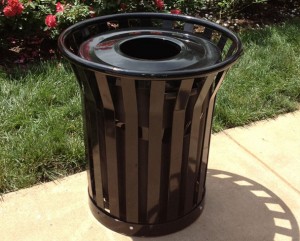 Copenhagen is a prime example of bike-friendly citie
Copenhagen is a prime example of bike-friendly citie
What does it take to make more walkable and bike-friendly cities?
In a word - codes. Zoning codes.
Obviously there's more to transforming streets for use by all members of the public. But a change in zoning codes for citizens who walk or bike shows a fundamental mindset that a town is serious about moving away from cars and closer to alternative modes of transportation.
Why does a town need to do this? Because citizens all over America are demanding change.
For too long, America's infrastructure was built around the automobile and cheap gas. The country created massive suburban communities so more people could own a house, a lawn and a backyard.
The problem is that this caused communities to be spread out over large tracts of land. For a resident to buy food, they had to get in their car and drive across town to the grocery store. The construction of strips mall and mega-malls encouraged this practice.
Planners mainly focused on making streets bigger to handle more cars and to allow cars to pass through quickly at high rates of speed.
For the most part, pedestrians or bicyclists were not figured into this equation.
But that's all changing now. There is a major trend taking place across the US where groups of people demand that communities now become more walkable and more bikeable.
Millennials, the age group born between 1980 to 2000, is the first generation that is not excited about owning a car. Many don't even bother to get a driver's license until they are older. Most of them prefer to live in an urban setting where they can walk, bicycle, or take mass transit to get around.
As you know, there is a cause and effect for everything. The cause behind this new push for walkable communities is that there are just too many cars out there. In the 1950s, families were fortunate to own one car.
Today, mom, dad, brother and sister all own their own cars. Pretty soon with driverless cars, even Fido will own a car.
All those people drive everywhere - to work, to school, to shop. They have to. That's the way this country is organized.
But here's where we are now. Traffic everywhere is horrendous. Major cities such as Los Angeles, New York and Chicago are choked with gridlock. If there is any type of bad weather - a major snowstorm for example, delays are unbearable. It's to the point where even a mild rainstorm will result in several accidents and mile long traffic jams. Even in smaller cities and towns.
Because we sit in our cars for so long Americans are becoming less healthy. Two-thirds of adults are overweight and one-third of children face the same problem.
America used to pride itself on how progressive it became over old world Europe with its little towns and narrow streets. But now planners and the population in general are beginning to see that living in a place where you can walk, bike or take a train is not a negative concept at all. In fact, we've reached the point where it is much more desirable than what we have now.
Change Lab Solutions is a very interesting organization. With a team of urban planners, architects and health experts they address critical issues faced by this nation and provide tools to solve them. They offer several research papers on creating walkable and bicycle friendly communities.
Checklist for creating bike-friendly cities and walkable neighborhoods
Researchers there came up with a checklist of items they consider essential to make the streets in a community more people-friendly.
That list includes: adequate sidewalks, bicycle parking racks, bike trails and paths, street furniture including outdoor park benches, water drinking fountains and trash receptacles, building facades, visibility, density, land use mix, landmarks, lighting, outdoor dining, big parks and pocket parks, public art, block lengths, street connectivity, road widths, safe crosswalks, traffic buffers, traffic calming devices, trees, mass transit and transit facilities such as bus shelters.
Add all these items to a street, and you have created an entirely new atmosphere that is safe and welcome for pedestrians and bicyclists.
Here are some examples of zoning code requirements from municipalities around the US that make a neighborhood more desirable and walkable:
- Park and recreation spaces: Los Angeles officials found that people who live within a mile of a park were four times more likely to visit that park at least once per week.
In Cambridge, Mass., the city enacted a code that provides a bonus for density in a redevelopment district with the provision that at least 2.2 acres is designated as public open space, with half contiguous with a neighborhood. The total open space may not be reduced less than 100,00 sq. feet., and must remain a park for 75 years,.
- Bike trails and paths: Many people will argue that creating bike lanes and other bicycle infrastructure is expensive. But consider the big picture in terms of savings in health, care and fuel.
In the bicycle friendly city of Portland, it is estimated that city residents will save $64 million in health care costs. By 2040, the millions invested in bike friendly designs will result in from $388 million to $594 million savings in health care costs and $143 million to $218 million savings in fuel costs. Those are big numbers.
- Bike infrastructure parking: A survey conducted in New York City found that the two biggest obstacles to commuting by bicycle were traffic and the lack of bike parking racks or bike storage.
In Minneapolis, that city's codes requires at least one bicycle parking rack space for every 20 automobile spaces. Many towns now require bicycle parking racks for any new development. Some towns even require the addition of shower facilities and lockers for new and existing buildings undergoing renovation downtown. If you want to encourage more people to bike to work instead of drive, you might provide a shower area for them to refresh.
- Street furniture such as benches, water drinking fountains and trash receptacles: If you make an area more walkable, that's great. But people are also going to get tired and thirsty. Especially older folks. So city planners must be sure to include site furnishings such as outdoor park benches and drinking fountains to accommodate these people. (Shade trees would be nice as well).
San Antonio has a code that requires site furnishings and street furniture that encourages exercise. They also require drinking fountains to be located in abundance. In addition, they recommend the placement of inconspicuous park trash receptacles so there isn't an abundance of litter.
- Traffic calming. Many, many pedestrians and bicyclists are hurt every year on American streets. Bike lanes, especially protected bike lanes, can reduce accidents. Clearly marked crosswalks can reduce injuries and prevent pedestrian deaths.
Traffic calming strategies range from roundabouts, medium islands, speed humps, speed bumps, bollards and other devices.
Many major cities are now implementing car free zones on weekends and their streets fill up with citizens. That's a trend that is going to continue and spread around the world. Popular urban planner Gil Penalosa created an event called "Ciclovia" and closed streets in Bogota on Sundays. Now a million people get out of the house and venture downtown.
Europe is obviously way ahead of us. Look at any video or photograph of a typical street in a major European city such as Copenhagen and you see people pedaling everywhere. Their city planners are not only limiting cars, they are looking to eliminate cars altogether in downtown areas.
Americans now believe it's time they took back their streets from automobiles. As Change Lab Solutions points out, zoning codes are one effective tool to achieve this. All it takes is some innovated-minded city officials or some dedicated citizen advocacy groups to get the wheels spinning.





